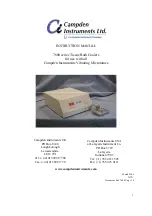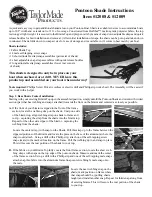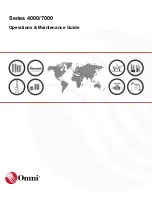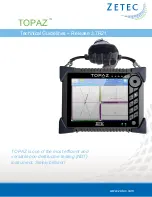
11
Joerns Support Surface
DermaFloat LR Model
© 2015 Joerns Healthcare • 6110064 RevB • 15-2003
Safety Information
Resident Migration
Specialty bed products are designed to reduce/
relieve pressure and the shearing/friction forces on the
resident’s skin. The risk of gradual movement and/or
sinking into hazardous positions of entrapment and/
or inadvertent bed exit may be increased due to the
nature of these products.
Traction
With any traction or unstable fractures, maintain
physician-directed angle of articulation and guard
against risks of resident migration or inadvertent
deflation of resident surface.
Skin Care
Monitor skin conditions regularly, particularly in areas
where incontinence and drainage occur or collect,
and consider adjunct or alternative therapies for high
acuity residents. Early intervention may be essential to
preventing serious skin breakdown.
Bed Height
To minimize the risks of falls or injury, the resident
surface should always be in the lowest practical
position when the resident is unattended. Make sure
areas under and around the frame are clear of objects,
persons and parts of body before adjusting height.
Cleaning
Warning:
Unplug the control unit from its power
source. Failure to do so could result in personal injury
or equipment damage.
Warning:
Do not expose the unit to excessive
moisture that would allow for liquid pooling. Personal
injury or equipment damage could occur.
Caution:
Do not use harsh cleansers/detergents, such
as scouring pads and heavy-duty grease removers, or
solvents, such as acetone. Equipment damage
could occur.
Control Unit
Wipe off dust. If necessary, clean the housing exterior
with a disinfectant solution or a mild detergent and a
damp cloth. Then wipe dry.
General Cleaning
If there is no visible soilage with possible body fluids,
it is recommend that the mattress system be cleaned
with a mild detergent and warm water. If disinfection is
desired, a combination cleanser/disinfectant may be
used as explained in “Disinfecting” area.
•
Resident care equipment that does not come into
contact with mucous membranes or
non-contact skin, requires low-level disinfection.
Wiping surfaces with a properly prepared
detergent or disinfectant carries out low level
disinfecting.
•
Processing of dirty resident care equipment should
take place in a designated area away from clean
or sterile supplies and food preparation areas.
• Detergent/disinfectants should not be mixed with
other germicides or detergents. Using the proper
dilution insures the most effective killing power of
the disinfectant.
•
Wash hands often and well, including after
removal of gloves.
•
Resident care equipment that is used in isolation
areas should be disinfected in accordance with all
internal policies and procedures regarding such
equipment.
Disinfecting
When there is visible soilage and between residents, it
is recommend that the unit and mattress be disinfected
with a tuberculocidal disinfectant. Disinfectant should
be registered with the Environmental Protection
Agency (EPA).
•
Use rubber gloves and eye protection.
• Prepare detergent/disinfectant (registered by EPA
as hospital disinfectant) solution according to
instructions on label for correct use-dilution.
• With support surface deflated, thoroughly wipe
down entire mattress, as air cells will lie flat. Be
sure to reach all areas underneath and in-between
air cells. Allow to air dry.
•
If dust or other soiling has accumulated along
air hoses, remove using swabs moistened with
detergent/disinfectant as necessary. Allow all
components to air dry. Wrap mattress in plastic
and return to storage area.
•
Thoroughly wipe down outside of control unit and
allow to air dry. Cover with plastic and return to
storage area
•
Remove gloves and dispose; wash hands.
11































